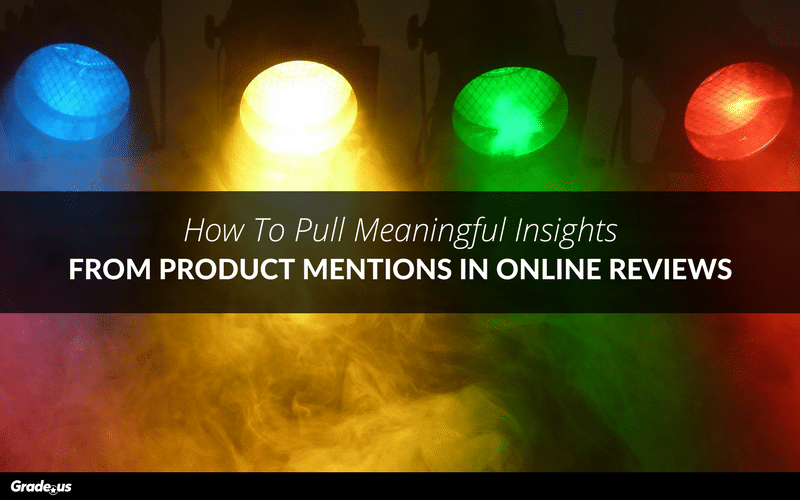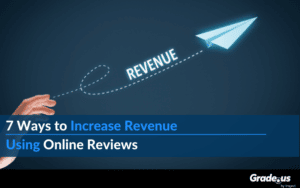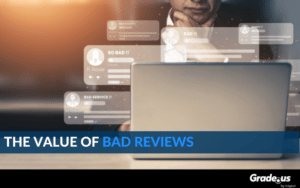What's the worst part about marketing?
It's lying.
As people, we're conditioned to be nice, to be polite. This means customers are often hesitant to share their honest opinions upfront. Sometimes customers lie. Other times they may not know what they want. When they do, many of them don't want to tell you what they want.
Customers tell you what they think you want to hear.
What about that one product that's always mentioned in reviews?
In his book, How Customers Think, Gerald Zaltman notes 80 percent of new products and services fail within six months. These are the same products that were vetted through focus groups. These companies spend a significant amount of money on research, yet they fail anyway.
Why?
Research from CB Insights found 42 percent of startups failed for one surprising reason.
No market need.
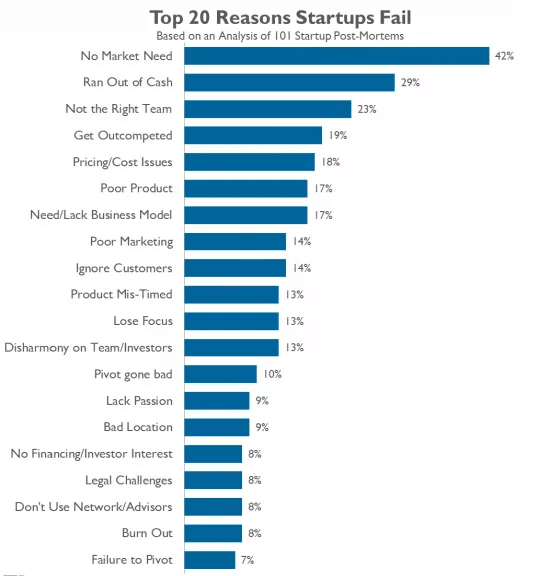
There's an easy solution to this incredibly common problem. Reading reviews.
Seriously.
There's a treasure trove of actionable data lurking inside product and service reviews. Your reviews, competitor reviews - it doesn't really matter. It's the kind of data your competitors would love to have.
What kind of data are we talking about here?
· Who (or what) you're actually competing with. Let's say you have a specific competitor in mind. Is that the competitor customers are actually evaluating you against? Are they comparing you to a specific competitor outright or simply aspects from a variety of products and services?
· Customer frustrations and pain points. Sometimes we get it wrong. Sometimes the problems we think customers want solved most are actually secondary or tertiary problems. Reviews show you whether you're focused on the right problem.
· Why you (or your competitors) aren't getting the reviews you want. When customers repeatedly mention a specific product in their review there's a reason. Sometimes they're evaluating aspects of that product or service. Sometimes they're unhappy that a specific expectation or need wasn't met. Other times they're looking to reinforce preferences.
· Key competition points. Is there a specific reason customers prefer your product over your competitors? Do their reviews disclose a desire for features or functionality your competitors aren't offering? If you know why customers choose (or don't choose) your product, you know what you should be talking about.
· Customer habits and interests. Are customers using your product or service for something unexpected or unconventional? How do they use your product or service? Do they have a specific routine that's built around your product or service? For example, some customers frequent specific restaurants at lunch time. Some clients decide they need PR or SEO help but only after something goes wrong.
Customers have a tendency to be "nice." Reviews are the antidote to that problem.
And the greatest area of learning?
That one product that always seems to be mentioned in reviews.
Let's take a look at a few examples of products mentioned in reviews. First up, Amazon Kindle. The Kindle was first released in 2007. Almost immediately they had competitors. Fast forward to today and you'll notice that one product shows up more often in their reviews.
The Barnes & Noble Nook
If we take a look at Amazon's newest Kindle, the Kindle Paperwhite, we see they have thousands of reviews. Here's the interesting part.
The Nook is mentioned individually more than 700 times. Amazon customers repeatedly mention the Nook in their reviews.
But why?
And what can we glean from these reviews?
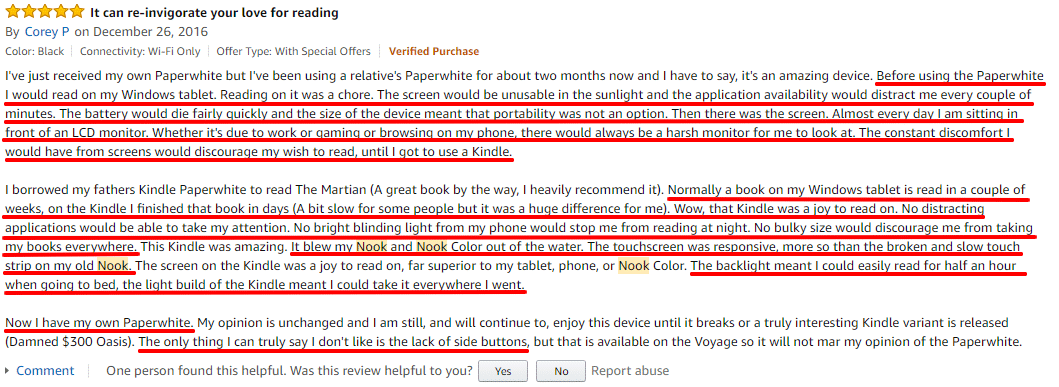
- The Nook ereader screens are too bright
- Screen brightness reduces the desire to read
- App notifications on the Nook, Windows tablets and mobile phones are distracting
- The Nook touchscreen is slow and unresponsive
- Customer habits show they read during dead time (traveling, before bed, waiting times, etc.)
In fact, there's a whole lot more you can draw from this example. What's the gist of this review? The Nook makes it harder for their customers to read books.
Is it just this customer? Let's find out.

This customer agrees.

So does this one.
Read through these reviews and you'll see the same points reinforced by customers over and over and over.
Let's shift our attention to the Internet of Things and look at another product.
Amazon's Echo
Amazon Echo is a smart speaker that connects to Amazon's voice controlled intelligent personal assistant, Alexa. With this smart speaker, you can play music, control your smart home, get information, news, weather and thousands of other tasks.
What's the one product that shows up most often in their product reviews?
Google Home.
Google Home is mentioned more than 900 times. It's a competing product and customers seem to be drawn to both. Let's look at a review.

What can we glean from this review?
- Amazon Echo pairs well with thousands of apps and peripherals. Google Home does not
- The Echo’s search capabilities aren’t very accurate
- Product connections aren’t always as seamless as they should be
- Alexa gets requests wrong as often as right
- Customers are willing to take a chance on Echo thanks to the low price point. Customers aren’t as loyal though
Customers are treating the Echo as a companion. The natural language processing isn't where it needs to be and customers aren't as happy with the Echo's search capabilities.
Do other customers agree with StuE?
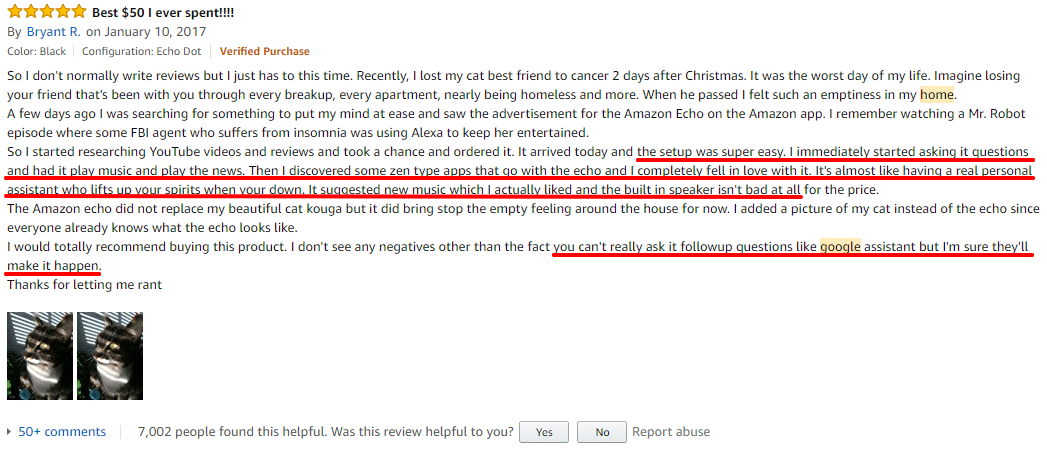
Bryant R. agrees.

Sam says Alexa isn't as smart as Google Home.

Looks like there's a consensus on Amazon Echo. It's not as smart as Google Home. It's much cheaper so that's probably why most customers decided to buy the Echo. Amazon needs to make some dramatic changes.
This is bad news.
If Google gets into a price war with Amazon there's a good chance they'll lose at this point.
If products are repeatedly mentioned in your reviews there's a reason. It's important to find the reason behind the product mentions. If your products are always mentioned in customer reviews, find out why. If you're repeatedly seeing a product in your reviews, investigate. Look for...
- Behavioral trends
- Expectations and assumptions
- Habits and routines
- Preferences and requests
- Red flags and customer motivations
These are all things to look for around a specific product or service. A business, product or service that's mentioned repeatedly is a cue. An indicator that you need to do some digging.
What happens when you do?
How do you use the data from that one product in your business?
Use product data to reject customer requests
At this point, you have data.
You know more about your customers desires, goals, fears and frustrations than you did when you started. You have a pretty good idea of what they want. You may even know why they're not giving you the five star reviews you're looking for.
It's not the time for action.
It's time for assessment. Sort your data into several buckets.
- Things you’ll fix/change
- Things you won’t fix/change (and how you’ll respond to customers who ask)
- Things you absolutely should not change
- Things you’re unable to change
Each bucket requires a response. You'll need to make some important decisions for each bucket.
- What you’ll say to customers
- Who will respond
- When you’ll respond
- How you’ll respond
Already created answers to each of the items in your buckets?
Fantastic.
Now you're ready for action.
The rest is simple. Follow your plan. Assess the results and iterate.
Wait a minute.
What about the big problem, the elephant in the room?
Customer reviews aren't all that reliable
It's true.
One off reviews may not be all that valuable. That's why I mentioned that we're looking for trends. Trends give you the confidence you need. It's not just one customer that has this problem or request. It's 20, 50, or 500.
There's a general safety in numbers.
But that isn't enough, is it? What if the trends are all wrong?
It's simple.
You create a hypothesis, then you test. You test your data until you validate or falsify your hypothesis. Then you rinse and repeat.
Here's the good news.
If customers are all complaining about something they don't actually want, you're in a position where you can make an informed decision. Because your decision will be based on evidence. It's a simple way to avoid making an irreversible mistake.
That one product repeatedly shows up in your reviews for a reason.
It's a cue.
A signal for you to investigate. Your customers are telling you what they want.
Customers don't want to tell you the truth upfront. Sometimes they can't. More often than not reviews give you the honest truth. The distilled clarity you need to create a better product, make a better service and win more positive reviews.
Because unlike focus groups, reviews give you the information you need to hear.
About the Author
Andrew McDermott
Andrew McDermott is the co-founder of HooktoWin. He shows entrepreneurs how to attract and win new customers.

